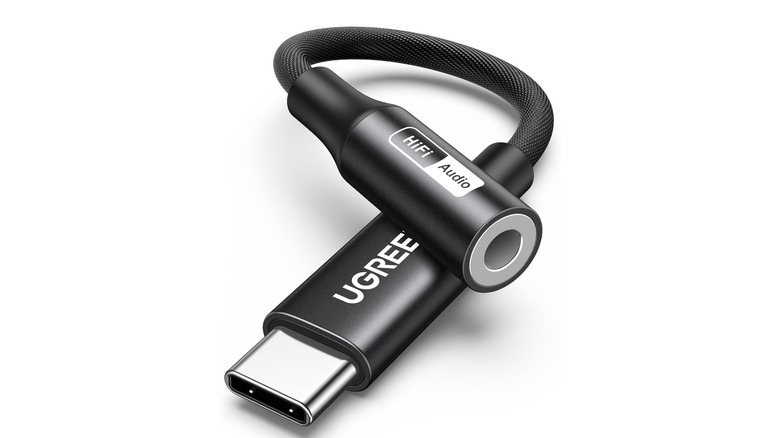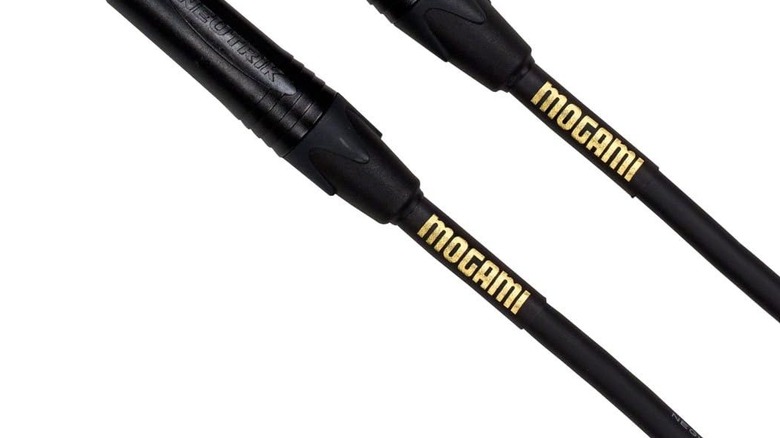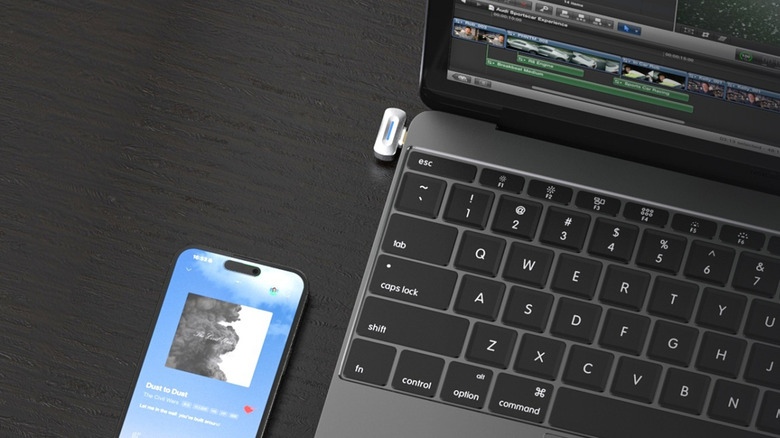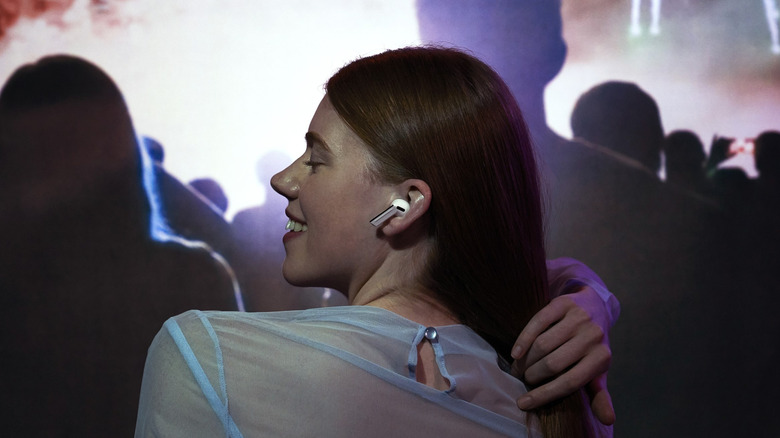6 Affordable Gadgets That Every Audiophile Should Have In Their Home
We may receive a commission on purchases made from links.
High fidelity audio gear is known for carrying an equally high price tag, making audiophilia a very expensive hobby. But just because you can spend staggering amounts of money doesn't mean you need to, or that you should. In fact, some of the most convenient gadgets every audiophile should keep on hand are also some of the cheapest.
Even if you've got a Hi-Fi system setup, there are plenty of things that can make it sound better. There are also items that can help maintain a high level of audio quality wherever you go, since your loudspeakers are stationary and confined to a single room. As a lifelong audiophile who caught the high-fidelity audio bug at a young age, I've never had the money to go hog-wild with my audio setup, instead adding equipment one piece at a time over many years. What I found along the way are plenty of gadgets that make my audio life better and easier. I've rounded up a handful of them here.
Whether you're just getting into high fidelity audio, or have dedicated yourself to the hobby for many years, these gadgets are worth picking up. From dongles that upgrade your mobile audio to cables that compensate for noise, and even protection for your collection, there's something here for everyone. Here are six affordable gadgets every audiophile should keep in their home.
A USB-C DAC dongle keeps your music crisp on the go
If you want to use your phone for Hi-Fi audio, you absolutely need a DAC (digital audio converter) in order to use wired playback devices at the highest quality. Audiophiles debate whether standalone portable DACs offer any tangible benefit. For me, the inconvenient form factor outweighs any subtle improvements to audio quality, not to mention the price tag. Unless you're driving high-impedance headphones while out and about, grab a cheap DAC on a rope and call it a day.
Almost any inexpensive USB-C dongle has a DAC that works well enough to drive the vast majority of headphones or IEMs. I've personally had good luck with this Ugreen USB-C to 3.5mm Audio Adapter, which has a 32-bit/384kHz sample rate. That's a far higher fidelity than nearly any recording an audiophile is likely to have. I've also been happy with this random USB-C to 3.5mm Headphone Adapter from an Amazon gibberish brand called Wkwzy. It has the same sample rate of 32-bit/384kHz and is slightly cheaper than the other brand.
I always keep one DAC dongle in my car, another in my backpack, and a third at my desk. They're so cheap and useful that I like to have one within arm's reach. On top of being great for piping out music from your phone, they're also better than the built-in DACs of some laptops.
Shielded and balanced audio cables keep your music free of interference
Audiophiles have as many superstitions as a medieval peasant, and we're well known for our ability to flush money down the pipe on auditory snake oil. However, one thing audiophiles are right about is the need for shielded cables. All sorts of interference can make its way into your audio stream through your cables (hold your phone near the audio cables connected to your loudspeakers while you make a phone call if you need proof). The noise often comes from electromagnetic interference, which is all around us, especially those of us with lots of tech at home. Shielded cables act like a Faraday cage to block that noise.
Another way to keep the audio stream clean is balancing. In the context of a cable run from the left or right channel of a mixer or interface to the corresponding loudspeaker in a stereo setup, balanced cables use a grounding wire and an audio conduction wire, but they also include a third wire that reverses the polarity of an audio signal. The science behind this is fascinating, but the simplified version is that any noise introduced into the audio stream gets canceled out. When it comes to your loudspeaker setup, you should seek out cables that are both balanced and shielded.
My personal favorites are the Mogami Gold cables, which run about $90 per 10-foot cable. If that's a bit rich for your blood, I've also had good luck with Hosa's Balanced Interconnect cables. They run about $30 for a pair of 10-foot cables, though they often go on sale for much cheaper. For more recommendations, check for audiophiles angered by my picks. They will certainly have their own suggestions.
Good ear protection is dirt cheap — and you need it
If you want to be an audiophile, you need good hearing and an analytical ear. Wearing out your ears at loud concerts will damage your hearing over time, so invest in high-quality earplugs that turn down the volume at shows without ruining the sound quality. There are several companies in this space, and I've tested both the Loop Experience 2, which are trendy among the Instagram demographic, and Eargasm High Fidelity Earplugs, which cater more directly to ravers like myself.
Both brands claim to attenuate event sound evenly across the frequency spectrum, but whereas the Eargasms are see-through to reveal an attenuation wire running down the center, I'm not willing to break open my Loops for science. The company claims the Loop Experience 2 earplugs use a mesh at the end of an acoustic channel, which presumably diffuses sound waves before they can hit your eardrums.
In practice, I find the Eargasms provide a higher degree of noise reduction, while the Loops provide a slightly more transparent sound. From the front row at EDM shows, it's hard to tell the difference without a side-by-side comparison. Either pair significantly reduces the amount of brain-liquifying bass being drilled into your head when a dubstep DJ decides to bring 18 of his own HSD Battleaxe speakers to the function.
A USB-C dongle can add near-lossless Bluetooth codecs to your devices
If you're an audiophile who owns an iPhone, you might be aware that Apple devices do not support high-resolution Bluetooth codecs. A codec is the technology that compresses and decompresses audio streams. iOS only supports SBC and AAC, which top out at 328 and 320 kbit/s, respectively. That means you're limited to a highly compressed wireless audio stream, which degrades any lossless audio source. That's part of the reason why so many audiophiles look down their noses at Bluetooth audio. Over on the Android side of the fence, users are treated to support for Qualcomm aptX and Sony LDAC. These high-res codecs still don't reach the threshold to be considered truly lossless, but when connected in a best-case scenario, they're very close. Windows devices also lack LDAC, and have inconsistent aptX support.
However, there's an all-in-one solution that works for pretty much every device with audio output capabilities and a USB-C port: an audio adapter dongle. To be clear, I have not had a chance to test these gadgets because all of my wireless playback devices support codecs such as aptX and LDAC. One option is the Fiio BT11, which retails for around $50 and plugs into your phone or computer via USB-C. You simply connect your premium wireless headphones to the receiver itself. The dongle supports the highest quality aptX Lossless and LDAC, as well as Bluetooth Low Energy for higher stability, which should mean the stream falls back to lower quality less frequently. Another option we've seen is the Questyle QCC Dongle Pro, which boasts LDAC, aptX Lossless, and more codecs for $120.
Cloud and local storage preserves your music library
Audiophiles tend to focus on our playback equipment, but our music collections are just as important. If you're listening to digital audio (which you should be, since it's the only way to achieve bit-perfect replication), you probably have a library of FLAC and WAV files. Unless you keep backups of those files, they'll be gone the moment something goes wrong with your computer or media player. That's why it's a good idea to keep your music backed up on an external drive — and in the cloud, for redundancy.
I've found Google Drive to be satisfactory for syncing my audio files, since I can simply direct it to back up the music folder on my computer. But cloud storage is risky. What happens if Google's servers have a hiccup that just so happens to delete your files? What if you accidentally delete your music folder and Google Drive decides to sync that change? You're best off backing your music up on an SSD, as well.
My top choice for external SSD storage is the Samsung T9. It's a workhorse of a drive that I rely on to back up my writing, videos, and my music, among other things. Even with large, lossless music files, most people don't have more than a terabyte of music, so you should grab a 1 TB version of the T9 for under $140 at the time of writing. Avoid the cheapest flash storage, since the lifespan of a USB drive is often tied to the quality of its manufacturing. Unfortunately, the cost of SSD storage is becoming painfully expensive due to AI, which is driving up demand, so now is the time to buy if you don't have a backup drive for your music.
Get over yourself and buy some wireless earbuds
Yes, we all know they can't live up to a multi-thousand dollar loudspeaker setup in a treated environment, but here's the thing: You can't fit loudspeakers in your pocket. Plus, wireless earbuds actually sound pretty darn good these days. Unlike a $10,000 DAC, you can bring them to the gym, and unlike your $500 wired IEMs, they can handle a splash in the rain without dying on the spot.
After testing plenty of earbuds, my top picks are the Samsung Galaxy Buds3 Pro. Their wide soundstage, support for 24-bit/96kHz audio over SSC, and close adherence to the Harmon curve make them great for music, movies, or podcasts. If you prefer a more analytical sound, try the Sony WF-1000XM5, which can be made nearly flat with a bit of EQ tuning. As long as you know what kind of sound signature you like, you'll be able to find great earbuds that reproduce music well enough to satisfy you on the go. Put those puppies in your ears, accept that they sound good enough, and touch grass.






